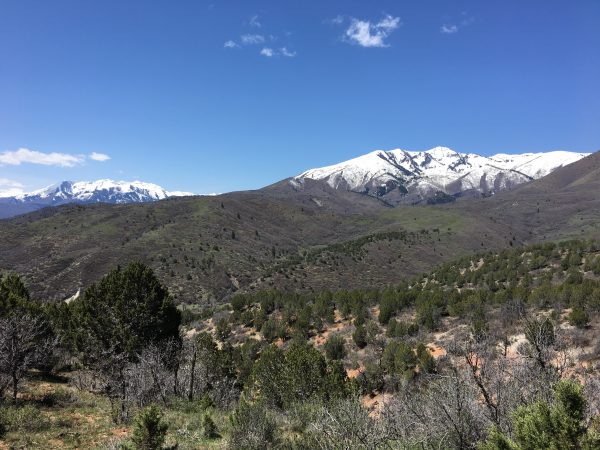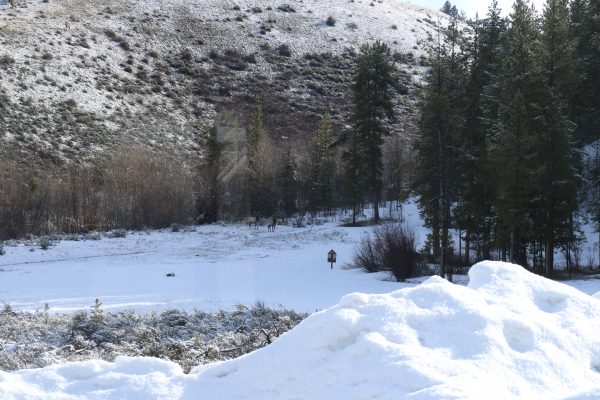
I’m sitting in bed, inside my camper, parked just below an open hillside within Wyoming’s Bridger-Teton National Forest. It’s 9:00 in the morning, robins are chirping outside and a fresh dusting of snow is melting off the roof under the sun’s gaze. From the window to my right, up on the hill, I can see eight tawny brown bodies, lighter in the back, darker in the front. My wife’s telling me I need to be working. But I can’t put down my binoculars.
There are eight bull elk feeding just a hundred yards away and I can’t take my eyes off them.
Rewind the clock to a few days ago and we were hiking in Utah’s Uinta National Forest. We walked up and over sagebrush covered foothills, ducked under bushy pine trees and side-stepped around low lying cactus. But when I spotted grey shapes slipping through the brush across the ridge, we immediately had to stop, sit and watch. My wife soon tired, but not me. With my elbows on my knees and glass pressed to my eyes, I kept watch as two, then three, then five and six mule deer does filtered across the rocky ridge. I was transfixed.
Most people enjoy seeing wildlife – but with hunters, it’s more. Correct me if I’m wrong here, but when we hunters see animals, we’re completely captivated, pulled to observe, drawn into the scene, locked-in to the exclusion of everything else around us. And we can watch for hours.
Why is this?
Whether it’s deer or elk, turkeys or bears or buffalo – I can’t get enough of them. I want to see how they feed and what they feed on. I want to watch as they interact and mingle and jostle. I’m fascinated as they move from one place to another, as they react to some unknown sound or smell, or as they finally find a resting place for the day, circle about, settle in, lay down and scan about. I’d venture to guess I’m not the only hunter like this.
So why is it, even outside of season, that we obsess simply in the observation of wildlife?
Maybe it’s because, different than your average observer, we hunters have an intimate understanding of wildlife, a unique connection. In our pursuit of animals during season, we’re keyed into the nuances of their behavior, the importance of their actions and reactions, their shifts in attention and direction – maybe this attention to detail necessitated by the hunt applies whether we have a weapon in hand or not.
Or maybe it’s because when we see wildlife we recognize something special – something precious. As hunters we take life, but through that process we also come to appreciate life, and when we see it – wild and free – we can’t help but honor it with our attention.
Or maybe animals are just pretty damn fascinating and we simply know it better than most.
Maybe it’s something else altogether. I don’t know. But what I do know is that I see movement.
There’s a flash of brown out the window, dark shapes are streaming down the ridge, elk are trotting through the trees down towards me, so I’ve got to go. I’ve got to toss aside the computer, settle in and grab the binos.
I’ve got to watch some wildlife.






